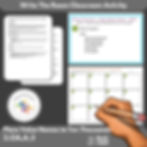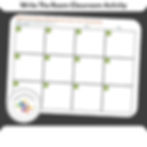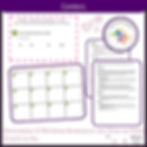Are you ready to embark on an adventure filled with knowledge, laughter, and the occasional rubber chicken? Well, strap on your thinking caps and prepare to dive into the wonderful world of lesson planning! Now, you might be thinking, "Lesson planning? Is that really a big deal?" Oh, my friend, it's like trying to juggle flaming swords while riding a unicycle. Lesson planning is the secret sauce that transforms chaos into order, confusion into clarity, and boredom into a dance party (well, almost). In this article, we'll explore the five essential parts of a lesson plan and uncover the mysterious need for three additional parts. Get ready to have your lesson-planning world turned upside down!

The Foundation of Lesson Planning
Let’s establish a solid foundation before we dive into the nitty-gritty details. Picture a majestic castle built on a foundation of marshmallows. It might look delicious but won’t stand the test of time. Similarly, a lesson plan without a strong foundation is like a ship without a rudder. So, what exactly is a lesson plan? Well, my friend, a lesson plan is a carefully crafted roadmap that guides teachers through the magical land of learning. It’s a blueprint that outlines what students will learn, how it will be taught, and how it will be assessed. In a nutshell, it’s the backbone of effective teaching. Additionally, a well-designed lesson plan accommodates different learning styles by incorporating varied activities and materials to meet diverse needs.
The Five Essential Parts of a Lesson Plan
Now that we’ve laid the groundwork let’s look at the five essential parts of a lesson plan. Engaging students is crucial, and incorporating activities such as group discussions, quizzes, and interactive methods can make a significant difference. Think of these parts as the gears that make the teaching machine go “ding!” Each part is vital in creating a well-rounded and engaging learning experience for students. Learning activities are essential in lesson planning, as they help students understand and apply what they have learned. So, grab your magnifying glass, and let’s examine each part under the microscope of awesomeness!
2.1 Learning Objectives
First up, we have the mighty learning objectives! These little nuggets of wisdom are the guiding stars that light the way for both teachers and students. Learning objectives define what students should know and be able to do by the end of the lesson, and they play a crucial role in planning and assessing student learning. They are like little beacons of knowledge that guide us towards the land of learning. Clear objectives help ensure students understand the material. But beware, dear teacher, for vague and fuzzy learning objectives can lead your students astray. Clear and measurable objectives are the name of the game here!
2.2 Instructional Materials
Ah, instructional materials! They are the magical tools that transform dull lessons into vibrant, interactive experiences. Just like a wizard's wand or a superhero's cape, instructional materials have the power to captivate students' attention and bring learning to life. From textbooks and worksheets to multimedia presentations and hands-on activities, these materials are the secret ingredients that make lessons engaging, meaningful, and downright fun!
2.3 Teaching Strategies and Learning Activities
Now, let’s dive into the fascinating world of teaching strategies. Picture yourself as a master chef preparing a feast for your hungry students. Teaching strategies are like your trusty kitchen utensils, each serving a unique purpose. Independent practice allows students to work on their own to apply the knowledge they have learned, while the teacher assesses their understanding of the material. Whether it’s a sprinkle of group work, a dash of cooperative learning, or a pinch of direct instruction, these strategies help you cater to the diverse needs of your students and keep them engaged, like a gourmet meal for the mind.
2.4 Assessment and Evaluation
Time to put on your detective hat and unveil the power of assessment and evaluation! Just as Sherlock Holmes uncovers hidden truths, assessment methods reveal what your students have learned and how well they've mastered the material. It's like conducting an investigation to gather evidence of learning. From quizzes and tests to projects and presentations, assessments help you measure progress, identify areas of improvement, and ensure that your students are on the right track to becoming knowledge ninjas.
2.5 Closure
Last but certainly not least, we have the grand finale, the cherry on top, the closure. Think of closure as the magical way to wrap up a lesson, leaving your students with a sense of fulfillment and a thirst for more. It's like the mic drop at the end of a rock concert. Closure activities provide a sense of closure (who would've thought?) and allow students to reflect on what they've learned, connect it to their own lives, and walk away with a smile on their faces and a spring in their step.
The Additional Three Parts of a Lesson Plan
Hold onto your hats, folks, because we’re about to take a detour into uncharted territory. Using lesson plan templates can help you create actionable and easy-to-follow lesson plans. While the five essential parts of a lesson plan are undeniably important, a hidden treasure trove of three additional parts can take your teaching to the next level. Lesson plan examples provide specific ideas and templates for creating effective lesson plans in various subjects and educational settings. These parts are like the sprinkles on a cupcake, the extra oomph that makes your lessons shine brighter than a disco ball.
3.1 Anticipatory Set
First up, we have the anticipatory set. Imagine walking into a room and being greeted by a marching band, confetti cannons, and a friendly llama named Larry. That's the power of an anticipatory set! It's the hook that grabs your students' attention right from the start and sets the stage for a fantastic learning journey. Whether it's an intriguing question, a thought-provoking video, or a captivating story, the anticipatory set primes your students' brains for learning and gets them excited for what's to come.
3.2 Differentiation
Now, let’s talk about the magic of differentiation. Just like a chameleon changes colors to blend into its surroundings, differentiation is all about adapting your teaching to meet the diverse needs of your students. Individual lessons can be tailored to meet these diverse needs by breaking down the content into smaller, manageable units. It’s the superhero cape that ensures every student feels seen, heard, and valued in your classroom. Whether it’s through providing alternative assignments, adjusting the pace of instruction, or offering additional support, differentiation helps you create an inclusive learning environment where all students can thrive.
3.3 Reflection and Feedback
Last but certainly not least, we have the superpower of reflection and feedback. It's like having a crystal ball that allows you to see into the depths of your students' minds and guide them toward even greater heights. Reflection encourages students to think critically about their learning, connect it to real-life situations, and develop a deeper understanding. Feedback, on the other hand, provides valuable insights and guidance, helping students grow and improve. Together, reflection and feedback create a powerful cycle of learning and growth, like a well-oiled machine of knowledge.
Why the Additional Parts are Needed
You might be wondering, “Why do we need these additional parts? Aren’t the five essential parts enough?” Well, my dear reader, while the five essential parts lay a solid foundation, the additional parts bring the magic. These parts help ensure students learn effectively by accommodating different learning styles, skill levels, and interests. Without an anticipatory set, differentiation, reflection and feedback, our lesson plans would be like a cake without frosting, a unicorn without rainbows. These additional parts enhance student engagement, foster understanding, and create a supportive learning environment where every student can shine.
Practical Tips for Implementing the 8 Parts
Now that you know the eight parts of a lesson plan, it’s time to put them into action! Using a weekly lesson plan can help you organize and structure your educational content over the course of a week. Here are some practical tips to help you implement these parts effectively and create lesson plans that are as smooth as a jazz improvisation.
5.1 Preparing in Advance
The key to success lies in preparation. Take the time to plan each part of your lesson thoroughly. Consider your learning objectives, gather the necessary instructional materials, brainstorm engaging teaching strategies, and design assessment methods that align with your objectives. Being organized and prepared sets the stage for a seamless and successful lesson.
5.2 Flexibility and Adaptation
Remember, no battle plan survives contact with the enemy, or in this case, the students. Be flexible and ready to adapt your lesson plan as needed. Pay attention to your students' needs and adjust your strategies accordingly. Flexibility allows you to meet your students where they are and ensure that learning is personalized and meaningful.
5.3 Seeking Professional Development
Even the most skilled Jedi Masters need ongoing training. Seek out professional development opportunities to enhance your lesson planning skills. Attend workshops, conferences, and webinars. Connect with other educators and learn from their experiences. Engage in continuous learning and growth to become your best teacher.
Lesson planning is no easy feat, but with the five essential parts and the three additional parts, you hold the keys to creating extraordinary learning experiences for your students. Remember, a solid foundation, clear objectives, engaging instructional materials, effective teaching strategies, assessments, closure, anticipatory set, differentiation, and reflection and feedback are the building blocks of successful lessons. So, dear teacher, embrace the power of lesson planning, sprinkle in some creativity, and watch your students soar to new heights. And always remember, a smile and a rubber chicken can go a long way in the world of teaching. Now go forth, unleash your lesson-planning superpowers, and may the laughter be with you!

































